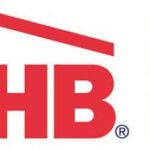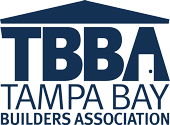
January 6, 2025
mwoolley_specialevents@tbba.net
A recent 2025 economic forecast presentation by one of the leading analysts for the National Association of Home Builders pointed toward an array of positives, but did not shy away from the post-pandemic factors that have created a slog in the industry.
Danushka Nanayakkara-Skillington, the AVP for Forecasting & Analysis for the NAHB, believes that the Federal Reserve’s easing of interest rates will eventually lead to an increase in home buyer demand, and she expects single family building to lead the way.
Over the next four years, she sees demographics yielding a strong runway for home building with 45 million millennial households in peak home-buying years. She also thinks the nation’s structural housing deficit will be reduced with annual single-family home building volumes rising to more than 1.1 million.
However, Nanayakkara-Skillington said builders will continue to endure headwinds: the cost/availability of labor, the price of building materials and the cost/availability of developed lots. The availability of acquisition, development, and construction credit, which has tightened for 11 consecutive quarters, will be another hurdle to overcome.
The central bank’s interest reduction rate has been a dominant factor in all the forecasts. Nanayakkara-Skillington believes the 30-year fixed-rate will eventually settle at just below 6 percent, but she warns that we need to buckle up.
“That does not mean it’s going to have a smooth path forward to that (number),” Nanayakkara-Skillington said. “I think there’s going to be a lot of choppiness until we get there.”
She added that even if the interest rate dips that low, it will be a challenge to convince existing homeowners to upgrade to a new home – a trend that marked the home-buying habits of past generations. Homeowners refinanced during the pandemic and now have rates between 2.7 to 4 percent.
“Convincing people a 6% mortgage rate is going to be the new normal is a hard sale,” Nanayakkara-Skillington said. “Around 60-65 percent of the existing mortgages right now have a below 4% interest rate. They were able to refinance. Convincing this group of people to become level-up buyers, re-enter the market and sign up for a 6 percent mortgage rate is a tall order.” That trend means new housing must increase to improve overall inventory, a key metric in increasing affordability.
The good news for home builders and prospective buyers is that the consequence of existing homeowners staying put, now has new homes making up 30 percent of market share inventory. In the early 2000s, new homes only made up 10-12 percent of market share inventory.
